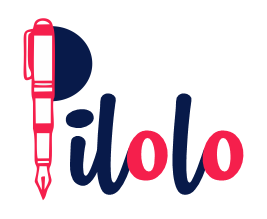Conflict is an inescapable part of the human experience, woven into the fabric of our personal relationships, professional endeavors, and even our internal dialogues. At its core, conflict arises from the diversity of perspectives, values, and goals that each individual holds dear. These differences, while enriching our lives with complexity and nuance, can also ignite sparks of disagreement and discord. If left unaddressed or mishandled, conflicts have the potential to escalate into damaging consequences, eroding trust, damaging bonds, and leaving a trail of resentment in their wake.
However, it is crucial to recognize that conflict is not inherently negative or destructive. In fact, when approached with wisdom and skill, conflict can serve as a catalyst for growth, understanding, and the strengthening of relationships. It presents an opportunity to challenge our assumptions, expand our perspectives, and forge deeper connections through the resolution of differences. The key to unlocking these transformative possibilities lies in our ability to manage conflicts in a healthy and constructive manner.
This comprehensive guide is a roadmap to mastering the art of conflict resolution. Within its pages, you will discover a wealth of practical strategies, time-tested techniques, and insightful perspectives that will equip you with the tools necessary to navigate conflicts effectively. From developing active listening skills and honing effective communication abilities, to exploring problem-solving strategies and embracing specific conflict resolution techniques, this guide will empower you to approach conflicts with confidence and emerge victoriously.
Whether you seek to strengthen personal relationships, foster a harmonious workplace environment, or cultivate inner peace, the art of conflict resolution is an invaluable asset. By embracing the principles outlined in this guide, you will not only learn to resolve conflicts effectively but also unlock the potential for personal growth, deeper understanding, and the fortification of the bonds that enrich our lives. Embark on this journey towards mastery, and discover the transformative power of turning conflicts into opportunities for growth and the strengthening of relationships.
Table of Contents
ToggleUnderstanding the Nature of Conflict
- Interpersonal conflicts: These occur between individuals, often stemming from personality clashes, communication breakdowns, or differing expectations.
- Intragroup conflicts: These take place within teams, organizations, or groups, often due to power struggles, resource allocation issues, or differing goals.
- Intergroup conflicts: These conflicts arise between different groups or organizations, often fueled by competition, ideological differences, or territorial disputes.
Types of Conflict
- Interpersonal conflicts: These occur between individuals, often stemming from personality clashes, communication breakdowns, or differing expectations.
- Intragroup conflicts: These take place within teams, organizations, or groups, often due to power struggles, resource allocation issues, or differing goals.
- Intergroup conflicts: These conflicts arise between different groups or organizations, often fueled by competition, ideological differences, or territorial disputes.
Stages of Conflict
Conflicts tend to follow a predictable pattern, and understanding these stages can aid in timely and effective intervention.
- Latent stage: This is the initial stage where underlying tensions or disagreements exist, but they have not yet manifested overtly.
- Emerged stage: At this point, the conflict becomes apparent, and parties involved begin to recognize the existence of a disagreement.
- Escalation stage: If left unresolved, the conflict intensifies, and emotions may run high, leading to further deterioration of the situation.
- Crisis stage: This is the peak of the conflict, where tensions reach a boiling point, and the potential for damaging consequences is highest.
- De-escalation stage: As the conflict begins to resolve, tensions start to dissipate, and parties involved become more open to finding a resolution.
- Resolution stage: This is the final stage where a mutually acceptable solution is reached, and the conflict is resolved.
The Art of Conflict Resolution
Resolving conflicts effectively is an art form that requires a harmonious blend of emotional intelligence, refined communication skills, and adept problem-solving abilities. It is a delicate dance of understanding, empathy, and strategic thinking, where each component plays a vital role in navigating the intricate landscape of human interactions and differing perspectives.
Emotional intelligence is the foundation upon which effective conflict resolution is built. It involves the ability to recognize and manage one’s own emotions, while simultaneously developing an acute awareness and sensitivity towards the emotions of others. By cultivating emotional intelligence, individuals can approach conflicts with a sense of self-awareness and emotional regulation, preventing escalations fueled by unchecked emotions and reactive behaviors.
Effective communication is the lifeblood of conflict resolution, serving as the bridge that connects disparate perspectives and facilitates mutual understanding. It encompasses active listening, a skill that involves fully engaging with the other party’s viewpoint, suspending judgment, and seeking to comprehend the underlying motivations and concerns. Coupled with the ability to articulate one’s own thoughts and feelings with clarity and respect, effective communication creates an environment conducive to open dialogue and collaborative problem-solving.
While emotional intelligence and communication skills lay the groundwork, problem-solving abilities are the driving force that propels conflicts towards resolution. This involves the capacity to identify the root causes of conflicts, think critically and creatively about potential solutions, and navigate the intricate web of competing interests and needs. By employing problem-solving techniques such as brainstorming, evaluating options objectively, and seeking win-win solutions through compromise and negotiation, individuals can transform conflicts from seemingly insurmountable obstacles into opportunities for growth and positive change.
By mastering these three interconnected components – emotional intelligence, communication skills, and problem-solving abilities – individuals can elevate conflict resolution to an art form. They gain the power to transform conflicts from destructive forces into catalysts for personal growth, strengthened relationships, and the cultivation of deeper understanding and empathy.
Through the artful application of these techniques, conflicts are no longer viewed as adversarial battles to be won or lost but rather as opportunities to bridge divides, forge stronger connections, and unlock the potential for positive transformation. It is a journey that requires patience, practice, and a commitment to continuous learning, but the rewards are profound – the ability to navigate life’s inevitable conflicts with grace, wisdom, and a spirit of mutual respect and understanding.
Active Listening
Active listening is a crucial component of effective conflict resolution. It involves fully concentrating on what the other party is saying, without interrupting or formulating a response prematurely. By actively listening, you demonstrate respect and create an environment conducive to open and honest communication.
Tips for active listening:
- Maintain eye contact and an open body language.
- Avoid distractions and give the speaker your undivided attention.
- Paraphrase and reflect on what the other party has said to ensure understanding.
- Ask clarifying questions to gather more information and avoid assumptions.
Effective Communication
Clear and respectful communication is essential for resolving conflicts. It involves expressing your thoughts, feelings, and concerns in a non-confrontational manner while also acknowledging the other party’s perspective.
Techniques for effective communication:
- Use “I” statements to express your feelings and needs without blaming or accusing.
- Avoid inflammatory language or personal attacks.
- Be specific and provide examples to support your points.
- Allow the other party to express their viewpoint without interruption.
- Practice empathy by trying to understand the other person’s perspective.
Problem-Solving Strategies
Once the foundation of open and respectful communication has been established, the stage is set to delve into the critical realm of problem-solving strategies. At this juncture, the focus shifts from creating an environment conducive to dialogue to actively engaging in the process of identifying and crafting mutually acceptable resolutions.
The path to resolution begins with a thorough exploration of the root causes and underlying interests fueling the conflict. This requires stepping back from the surface-level disagreements and diving deeper into the underlying motivations, needs, and perspectives of all parties involved. By peeling back these layers, the true essence of the conflict is revealed, allowing for a more targeted and effective approach to problem-solving.
With a clear understanding of the core issues at hand, the next step is to embark on a collaborative journey of brainstorming potential solutions. This process should be undertaken with an open mind, fostering an environment where all ideas are welcomed and no suggestion is immediately dismissed. By tapping into the collective creativity and diverse perspectives of those involved, a rich tapestry of possibilities begins to emerge.
As the pool of potential solutions takes shape, a crucial phase of evaluation and analysis commences. Each proposed solution must be carefully scrutinized, considering its feasibility, potential consequences, and alignment with the interests and values of all parties. This objective assessment allows for the identification of viable options that hold the promise of mutual acceptability.
Throughout this process, the art of compromise and negotiation becomes paramount. Rarely is there a perfect solution that satisfies every party’s desires to the fullest extent. Instead, the pursuit of mutually acceptable resolutions often requires a delicate dance of give-and-take, where each party is willing to make concessions and find common ground. This flexibility and willingness to adapt are essential ingredients in crafting resolutions that address the core concerns of all involved while minimizing the potential for lingering resentment or dissatisfaction.
Importantly, the process of problem-solving in conflict resolution is not a linear path but rather an iterative cycle. As new information emerges, perspectives shift, or circumstances evolve, the proposed solutions may need to be reevaluated and refined. Flexibility and adaptability are key, ensuring that the resolution remains relevant and responsive to the ever-changing dynamics of the situation.
Ultimately, the goal of employing problem-solving strategies in conflict resolution is to transcend the realm of adversarial positioning and embrace a spirit of collaboration and mutual understanding. By engaging in this process with empathy, creativity, and a genuine commitment to finding common ground, conflicts can be transformed from insurmountable obstacles into opportunities for growth, innovation, and the strengthening of relationships.
Identify the Root Cause
Effective conflict resolution begins with identifying the underlying cause of the conflict. This may involve exploring underlying needs, values, or interests that are not being met. By understanding the root cause, you can address the core issue rather than merely treating the symptoms.
Brainstorm Solutions
Encourage all parties involved to brainstorm potential solutions without judging or critiquing ideas initially. This fosters an environment of creativity and collaboration, increasing the likelihood of finding a suitable resolution.
Evaluate Options
Once a list of potential solutions has been generated, evaluate each option objectively. Consider the pros and cons, feasibility, and impact of each solution on all parties involved. This step allows for a well-informed decision-making process.
Compromise and Negotiate
Conflict resolution often requires compromise and negotiation. Be willing to adjust your position or make concessions when appropriate, while also ensuring that your fundamental needs and interests are met. Seek win-win solutions that address the concerns of all parties involved.

Constructive Conflict Resolution Techniques
While the foundational skills of active listening, effective communication, and collaborative problem-solving form the bedrock of successful conflict resolution, there are several specific techniques that can further enhance and facilitate a constructive approach to navigating conflicts. These specialized methods offer structured frameworks and proven strategies tailored to address the unique challenges and complexities that often arise in conflict situations.
Mediation is a powerful technique that involves the intervention of a neutral third party, known as a mediator. This impartial figure serves as a facilitator, guiding the conflicting parties through the resolution process with objectivity and expertise. Mediators employ a range of skills, including reframing contentious issues, identifying common ground, and fostering an environment conducive to open dialogue and creative problem-solving. By providing a structured and impartial platform for communication, mediation can help overcome impasses and pave the way towards mutually acceptable agreements.
Restorative practices offer a unique approach that extends beyond mere conflict resolution, focusing instead on repairing harm and restoring relationships. This technique acknowledges the profound impact conflicts can have on individuals and their connections, recognizing the need for healing and reconciliation. Through structured dialogues, restorative practices facilitate accountability, empathy-building, and the creation of action plans aimed at addressing the root causes of conflicts and preventing future occurrences. By prioritizing restoration and relationship-building, this approach fosters a deeper sense of understanding and paves the way for lasting positive change.
Conflict coaching is another valuable technique that provides personalized guidance and support to individuals navigating complex conflict situations. In this approach, a trained conflict coach works one-on-one with clients, offering tailored strategies, skill development, and emotional support throughout the resolution process. Conflict coaches can help clients strengthen their communication abilities, manage emotions more effectively, and develop a deeper understanding of their own conflict styles and triggers. This individualized support can empower clients to approach conflicts with greater confidence, self-awareness, and a repertoire of effective resolution strategies.
Furthermore, organizations and teams can benefit greatly from investing in comprehensive conflict resolution training programs. These programs equip participants with a robust toolkit of techniques and methodologies for managing conflicts effectively. Topics covered may include advanced communication skills, negotiation strategies, emotional intelligence development, and specialized approaches such as nonviolent communication or interest-based negotiation. By providing a structured learning environment and practical skill-building opportunities, these training programs can cultivate a culture of constructive conflict resolution within organizations, enhancing teamwork, productivity, and overall workplace harmony.
By incorporating these specialized techniques alongside the foundational skills of active listening, effective communication, and problem-solving, individuals and organizations can unlock a powerful arsenal of tools for navigating conflicts in a constructive and transformative manner. Each technique offers unique strengths and strategies, allowing for a tailored approach that addresses the specific needs and complexities of any given conflict situation. Mastering and judiciously applying these techniques can elevate conflict resolution from a mere exercise in compromise to a catalyst for growth, understanding, and the strengthening of relationships across all facets of life.
Mediation
Mediation involves bringing in a neutral third party to facilitate the conflict resolution process. A skilled mediator can help maintain open communication, identify common ground, and guide the parties towards a mutually acceptable resolution.
Restorative Practices
Restorative practices focus on repairing harm and restoring relationships after a conflict. This approach involves acknowledging the impact of the conflict, taking accountability, and working towards reconciliation and healing.
Conflict Coaching
Conflict coaching involves working with a trained professional who can provide personalized guidance and support throughout the conflict resolution process. A conflict coach can help individuals develop effective communication strategies, manage emotions, and navigate challenging situations.
Conflict Resolution Training
Organizations and teams can benefit from conflict resolution training programs that equip individuals with the necessary skills and techniques to manage conflicts effectively. These programs often cover topics such as communication, negotiation, mediation, and emotional intelligence.
Embracing Conflict as an Opportunity
In the dynamic landscape of organizations and team environments, conflicts are an inevitable byproduct of diverse perspectives, competing interests, and the inherent complexities of human interactions. While conflicts can sometimes be perceived as disruptive or detrimental, they also present opportunities for growth, innovation, and the strengthening of relationships when approached with the right mindset and skills.
To harness the transformative potential of conflicts, many organizations and teams have recognized the value of investing in comprehensive conflict resolution training programs. These immersive programs equip individuals with a robust toolkit of skills, techniques, and methodologies specifically designed to navigate conflicts effectively and constructively.
At the core of these training programs lies a strong emphasis on developing advanced communication skills. Participants learn to master active listening, a crucial component that involves fully engaging with the perspectives of others, suspending judgment, and seeking genuine understanding. They also hone their ability to articulate their own viewpoints with clarity, empathy, and respect, fostering an environment conducive to open dialogue and collaborative problem-solving.
Negotiation strategies are another essential component covered in these programs. Participants explore techniques for identifying underlying interests, generating creative solutions, and engaging in principled negotiation processes that prioritize mutual gains over adversarial positioning. They learn to navigate the delicate art of compromise, finding common ground while ensuring that their fundamental needs and values are met.
Mediation is often a focal point, as participants gain insights into the role and responsibilities of an impartial third-party facilitator. They develop skills in reframing contentious issues, identifying shared interests, and guiding conflicting parties towards mutually acceptable agreements. This expertise empowers individuals to serve as effective mediators, facilitating constructive dialogue and problem-solving even in the most challenging conflict situations.
Furthermore, these training programs place a strong emphasis on cultivating emotional intelligence, a critical component of effective conflict resolution. Participants learn to recognize and manage their own emotions, develop empathy and emotional awareness, and understand how emotions can influence decision-making and interpersonal dynamics.
By immersing individuals in these comprehensive training programs, organizations and teams cultivate a culture of constructive conflict resolution. Employees and team members are equipped with a shared language and a consistent approach to navigating conflicts, fostering a more harmonious and productive work environment.
The benefits of investing in conflict resolution training extend far beyond the immediate resolution of specific conflicts. These programs foster personal growth, enhance collaboration and teamwork, and contribute to a positive organizational culture built on mutual understanding, respect, and a commitment to continuous improvement.
As organizations and teams navigate an increasingly complex and diverse business landscape, the ability to manage conflicts effectively becomes a strategic advantage. By providing employees and team members with the necessary skills and techniques through comprehensive training programs, organizations can unlock the transformative potential of conflicts, turning them into catalysts for innovation, strengthened relationships, and long-term success.
Personal Growth
Conflicts provide opportunities for self-reflection, personal development, and gaining new perspectives. By engaging in constructive conflict resolution, you can enhance your emotional intelligence, communication skills, and problem-solving abilities.
Strengthening Relationships
Resolving conflicts in a healthy manner can deepen understanding, build trust, and strengthen relationships. When handled effectively, conflicts can serve as catalysts for greater intimacy, respect, and appreciation among parties involved.
Innovation and Creativity
Conflicts often arise from differing perspectives and ideas. By embracing these differences and engaging in constructive dialogue, you can unlock creative solutions and innovative approaches that may not have been considered otherwise.
Organizational Growth
In professional settings, effectively managing conflicts can contribute to organizational growth and success. Addressing conflicts promptly and constructively can improve team dynamics, foster a positive work culture, and enhance productivity and collaboration.
Conclusion:
Mastering the art of conflict resolution is a valuable skill that can benefit all aspects of your life. By understanding the nature of conflicts, developing effective communication and problem-solving abilities, and embracing specific conflict resolution techniques, you can transform conflicts into opportunities for growth, strengthened relationships, and positive change. Remember, conflicts are inevitable, but how you navigate them can shape the outcome. Approach conflicts with an open mind, a willingness to understand diverse perspectives, and a commitment to finding mutually beneficial solutions. In doing so, you’ll not only resolve conflicts effectively but also cultivate a deeper sense of understanding, empathy, and personal growth.



